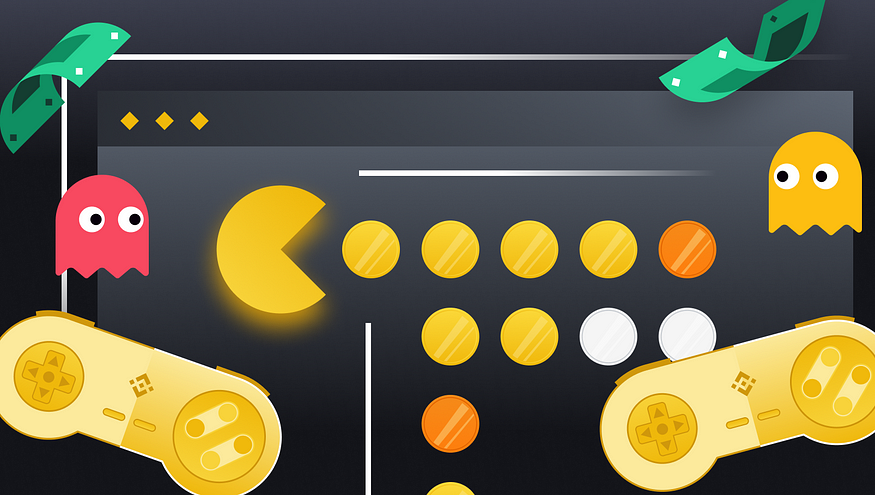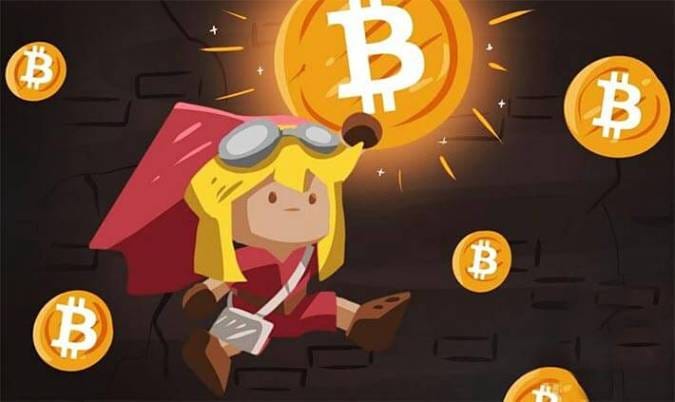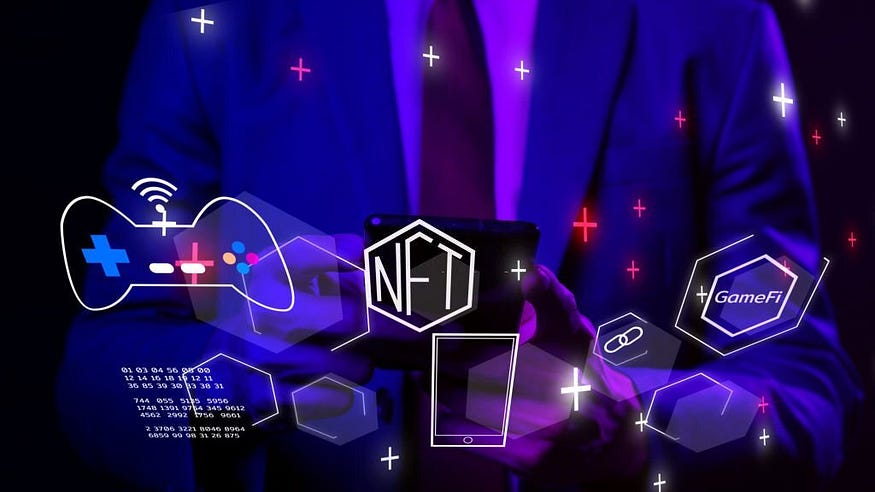In previous articles, we’ve covered the play-to-earn topic several times. We have discussed where play-and-earn came from, where it is going and what it means for us as a Guild. In this article, we would like to focus on the “earn” part of the game, namely how to calculate with the cryptocurrencies you earn from games.
In this one, we would like to focus on the “earn” part of the game, namely how to calculate with the cryptocurrencies you earn from games.

In principle, play-to-earn games can be seen as a full-time job, from which a regular (even weekly or monthly) income can be earned. However, as in the physical world, it requires a lot of work. Unfortunately, 1-2 hours of gaming a day is not feasible. Experience and statistics show that players who put in 8-10 hours a day are the ones who bring home a good amount of money in the P2E sector.
But before you hand in your notice at work or ask for a deferral at university, let’s be clear: at current rates of development, no game economy could sustain a cash-only outflow. This is why countless projects have gone bankrupt, and why it’s risky to dive into play-to-earn games for a regular monthly income. Not to mention the volatility of the crypto market and inflation.
In conclusion, there are some full-time players who do receive a regular monthly salary, but they are the exception to the “1 in 10,000” rule. Here are two methods that can help you get good results with a lower time and energy commitment, but, before we get too carried away.

Despite the fact that statistics indicate that more and more people now have some savings, unpleasant experience shows that these numbers may not be totally accurate.
In reality, younger generations nowadays typically begin planning for the future around the age of 20 to 25 and begin saving for things like house or retirement. When an unexpected expenditure arises, many people are still compelled to turn to loans or borrowing since these sorts of reserves typically do not provide flexible access.
Things move so quickly in today’s world that anyone without at least one, but ideally three, months’ worth of pay saved up might become financially exposed in the blink of an eye.
It is crucial that this sum be always accessible, that it can be handled adaptably, and that we do not have to incur significant management expenditures in order to access it when we require it.
The ideal replacement for this type of savings is cryptocurrency, which may be acquired via play-to-earn games. The coins you mine may be safely kept in your wallet where you can access them whenever you want and easily exchange them for fiat money (such as euros, forints, or dollars) with just a few simple clicks.
Additionally, as more and more merchants accept cryptocurrency payments, such as those made using the Binance Visa Card, you may not even need to convert.
However, the coins earned from P2E games are the perfect basis for you to start investing in different crypto-based investments.
At this point, we would like to stress that we are not investment advisors, so we do not have a specific business proposition, but we will show you what you can do with the tokens you have.

For instance, staking individual coins, which involves keeping them for a short or long time and earning a particular amount of interest, might be a great alternative for newbies. Each cryptocurrency has a distinct interest rate, thus it might frequently be advantageous to exchange each token for a different currency and stake it in that manner. Additionally, interest rates are variable among platforms, so it is wise to have an open mind. Some cryptocurrencies can only be staked on exchanges or landing pages, but other cryptocurrencies can be staked in a private wallet.
The next level is when the crypto earned from one game is used to invest in another game. Of course, this is a riskier process as every project has the potential to fail, so be smart!
The really experienced ones can trade or invest in different (e.g. membership-based) businesses. This is definitely not recommended for beginners, especially if they don’t have an advisor by their side.
There are obviously endless prospects in the field of cryptocurrencies; nevertheless, the most crucial thing is to exercise caution, consideration, and thoroughness.
So, if you’re one of those people who, in addition to having fun, want to earn some income by playing 1-2 hours of games a day, which they can then use as savings or investment funds, we have good news for you! Our play-to-earn games are designed just for you, and thanks to our scholar program, you can get started in a safe environment as a member of the AMG DAO.
We at AMG DAO have assisted over 2500 gamers in earning money playing cryptocurrency games over the course of the last year. We decided to ask our participants what they had been doing with their newfound money in order to find out what they had been doing with it. Did they continue along the cryptocurrency route or liquidate and convert into FIAT?
We have come to the conclusion that games that solely rely on NFT breeding to maintain their economies can swiftly lose their attractiveness as well as completely wreck them. Additionally, we have observed projects that lack authentic gameplay (we’d even venture to claim that 95% of the existing p2e products lack authentic gameplay), struggle to hold customers’ attention over the long term.
Users now have little control over this, but long-term sustainability of the game depends on players developing a strong belief in it. This may be done by either hanging onto their acquired tokens or investing again.
Guilds may also be relevant in this situation. One of a guild’s tasks can be to educate players and help them develop strong convictions to hold onto their gaming tokens longer. This will help the game developers continuously add features and economy sinks to their game, until it becomes self-sustaining, or in other words, only allow a small percentage of the users to be purely play-to-earn players.
At AMG DAO — a play-and-earn EU based guild — we dubbed our activities as play-to-hodl, as we take pride in the fact that we’re hodlers of the game tokens our players earn over the course of their game time — and it’s not just the guild it’s the players themselves. By holding onto the tokens earned, we’re not only “giving time” to developers to figure out how to build their game to be better, but also gives the opportunity to potentially sell at a better price.
This being said, let’s see all the different ways our players have handled their earnings, by splitting them into various personas — all of them we’ve seen in our guild.

The holder — plays to hodl
One of the most typical and common persona in the guild. It is hard to get the exact numbers, however around 80% of the guild members are holding onto their crypto earnings — mostly staking it with the game’s native staking mechanism. These are the players who first and foremost believe in the game’s long term vision, the developers and that by holding onto their tokens they could see a bigger upside in the future.
They are an important part of the game’s economy, as they will not liquidate their earnings right away, therefore wouldn’t contribute to a downside sale of the token. They usually also are the ones who keep on playing the game regardless of the token prices, they are looking for exciting gameplay primarily and earnings are secondary.
This persona also thinks of the earnings as a way of building their crypto portfolio without any initial investment, basically removing the risk element from their crypto journey.
The reinvestor — play, earn, spend back, repeat
A smaller percentage of the guild members belong to this persona — mainly because so few games actually feature economy sinks that provide meaningful experience to anyone who would want to reinvest their earnings.
Regardless of this, with currently 2 games in our portfolio where players can reinvest their earnings we’ve seen more and more of this persona popping up. On a guild level we can incentivize players to reinvest into the game — i.e. by not taking the 30% from their earnings but instead spending it back into the game together.
This way the player spends 70% and the guild subsidizes the remaining 30% for any spendings, which keeps the player motivated to keep spending back into the game.
This persona is also looking for a game that is enjoyable and if they spend back into the game, it either gives them access to higher levels, harder dungeons, or better reputation within the game (such as titles or skins). The potential economic upside of reinvestment is also present, however it’s not as strong as if they can get more out of the game from the gameplay’s perspective.
The spender — plays to earn
Probably the most known persona from the rise of play-to-earn gaming. While the ideology of play-to-earn really helped the industry grow, it also resulted in games onboarding players who were really only interested in making as much money as they can then leave the game. Naturally, the risk-free offering of a guild also attracts these players and in our guild we have also seen players selling their tokens as soon as they receive them — then going and looking for a game once it’s not “worth” playing anymore.
Although this persona is not sustainable in the long term — at least if more than 10% of the game’s user base is play-to-earn player (based on our calculations) — these players are the ones actively scouting for new games and offering their opinions on them right away. What’s most important however, play-to-earn players can only exist in games, where there are more holders, reinvestors or spenders than p2e players — because if everybody wants to sell but nobody wants to buy then there’s no profit.
Developers need to work with different guilds, not only for marketing purposes
Since guilds are great discovery and user acquisition tools, game developers need to pay attention to the guild’s audience and see how these different personas represent themselves. In the world of games with crypto based economies, it’s important for game developers to act as a central bank of their own game and create more input for their economy than output, which means all player personas should be present in the game, but their percentage needs to be adjusted over time — while responsibly building a great game experience as that’s what’s going to keep gamers in the game.
We at AMG DAO are currently working hard on educating our players and building web3 tools to make sure players we bring into the games are there to enjoy themselves first, earn tokens second and potentially reinvest. We are well positioned in the Central-Eastern European region, where our players are not looking to live off of playing games on a monthly basis, but are looking for ways to build their portfolio and reinvest in a safe and sustainable way.
AMG is a decentralized autonomous organization, bridging the gap between players and web3 game developers, bringin the next billion users into the metaverse.
AMG acquires non-fungible tokens (NFTs) used in blockchain-based games and acts as a trusted party advocating for games in the metaverse, thus bringing more people in.
We are leveraging strong partnerships with games developers and Yield Guild Games to launch our organization to the forefront of the Central/Eastern European gaming market.
AMG DAO has been building a game focused crypto wallet, guild management and other tools to keep contributing to the ecosystem, in order to aid the creation of games with sustainable economies.
AMG DAO Social Media Links:
Website | Twitter | Discord | Facebook